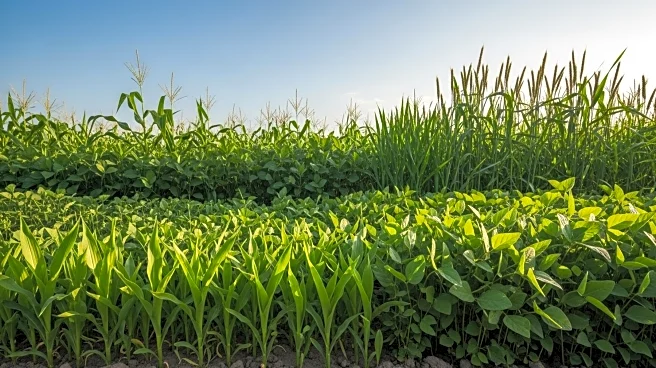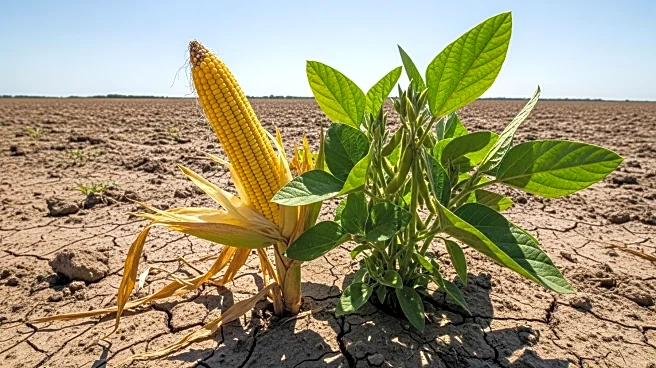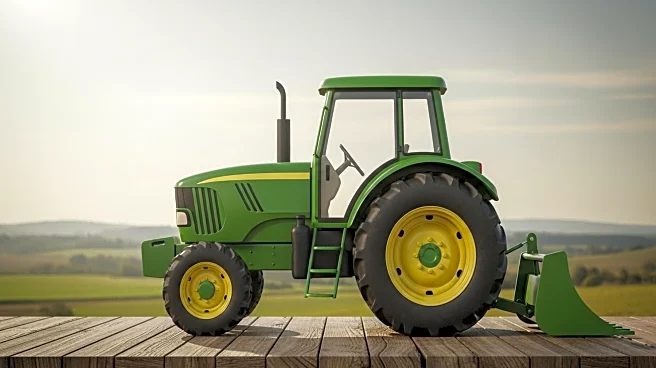What is the story about?
What's Happening?
The USDA has released its latest crop condition ratings, revealing significant disparities in the health of corn and soybean crops across various states. Iowa, Pennsylvania, and Wisconsin are leading with over 82% of their corn rated in good or excellent condition. Conversely, Kentucky, Tennessee, and Illinois are struggling, with only 50-55% of their corn crops rated similarly. Soybean conditions also show variation, with Louisiana topping the list at 92% good/excellent, while Kentucky and Tennessee report only 42% of their soybeans in good condition. These ratings are crucial as they precede the harvest season, impacting agricultural productivity and economic outcomes for farmers.
Why It's Important?
The USDA's crop condition ratings are vital for understanding the agricultural landscape and economic implications for farmers and related industries. States with high ratings may experience better yields, contributing positively to local economies and food supply chains. Conversely, states with lower ratings face potential economic challenges, including reduced crop yields and financial strain on farmers. This disparity can affect commodity prices and influence national agricultural policies. The ratings also highlight the need for targeted support and interventions in struggling regions to mitigate adverse impacts on the agricultural sector.
What's Next?
As the harvest season approaches, states with lower crop condition ratings may need to implement strategies to support farmers and improve crop health. This could involve increased investment in agricultural technology, pest control measures, and soil management practices. Additionally, policymakers might consider revising agricultural subsidies and support programs to address regional disparities. The USDA will continue monitoring crop conditions, providing updates that could influence market dynamics and policy decisions. Stakeholders, including farmers, agronomists, and government agencies, will likely engage in discussions to address these challenges and optimize agricultural outcomes.
AI Generated Content
Do you find this article useful?















